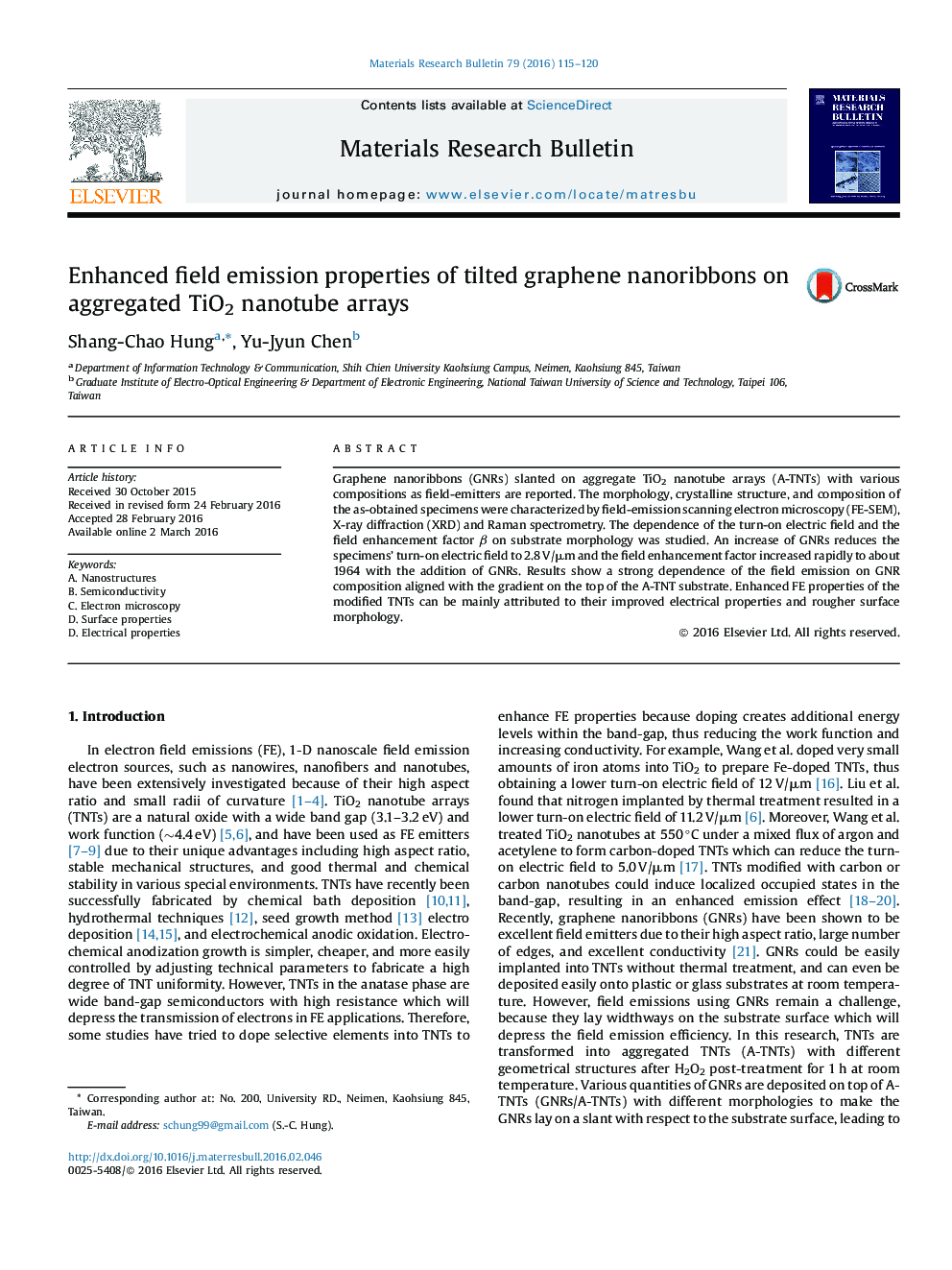| Article ID | Journal | Published Year | Pages | File Type |
|---|---|---|---|---|
| 1487103 | Materials Research Bulletin | 2016 | 6 Pages |
•Graphene nanoribbons (GNBs) slanted on aggregate TiO2 nanotube (A-TNTs) as field-emitters.•Turn-on electric field and field enhancement factor β are dependent on the substrate morphology.•Various quantities of GNRs are deposited on top of A-TNTs (GNRs/A-TNTs) with different morphologies.•With an increase of GNBs compositions, the specimens' turn-on electric field is reduced to 2.8 V/μm.•The field enhancement factor increased rapidly to about 1964 with the addition of GNRs.
Graphene nanoribbons (GNRs) slanted on aggregate TiO2 nanotube arrays (A-TNTs) with various compositions as field-emitters are reported. The morphology, crystalline structure, and composition of the as-obtained specimens were characterized by field-emission scanning electron microscopy (FE-SEM), X-ray diffraction (XRD) and Raman spectrometry. The dependence of the turn-on electric field and the field enhancement factor β on substrate morphology was studied. An increase of GNRs reduces the specimens’ turn-on electric field to 2.8 V/μm and the field enhancement factor increased rapidly to about 1964 with the addition of GNRs. Results show a strong dependence of the field emission on GNR composition aligned with the gradient on the top of the A-TNT substrate. Enhanced FE properties of the modified TNTs can be mainly attributed to their improved electrical properties and rougher surface morphology.
Graphical abstractFigure optionsDownload full-size imageDownload as PowerPoint slide
